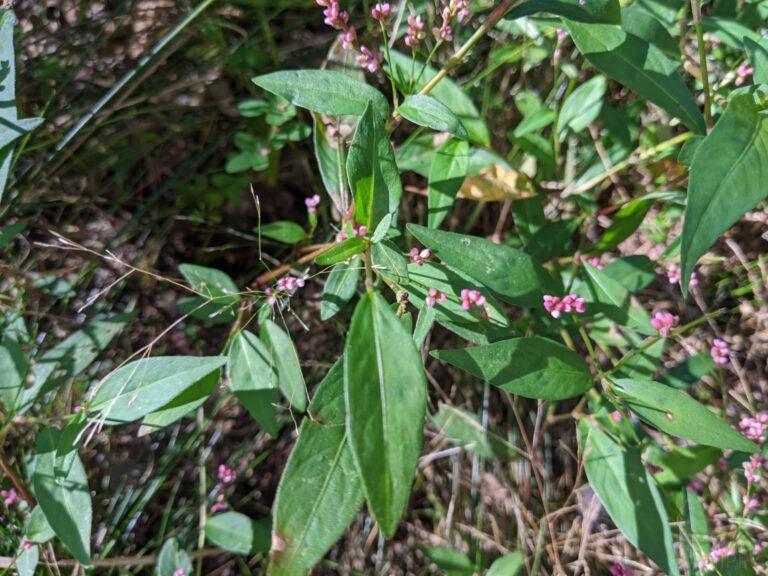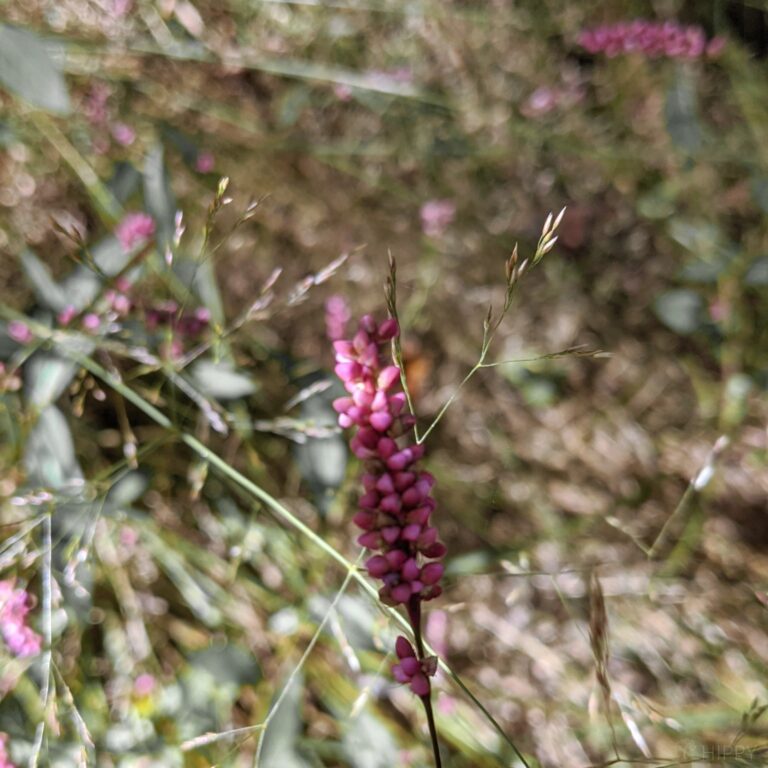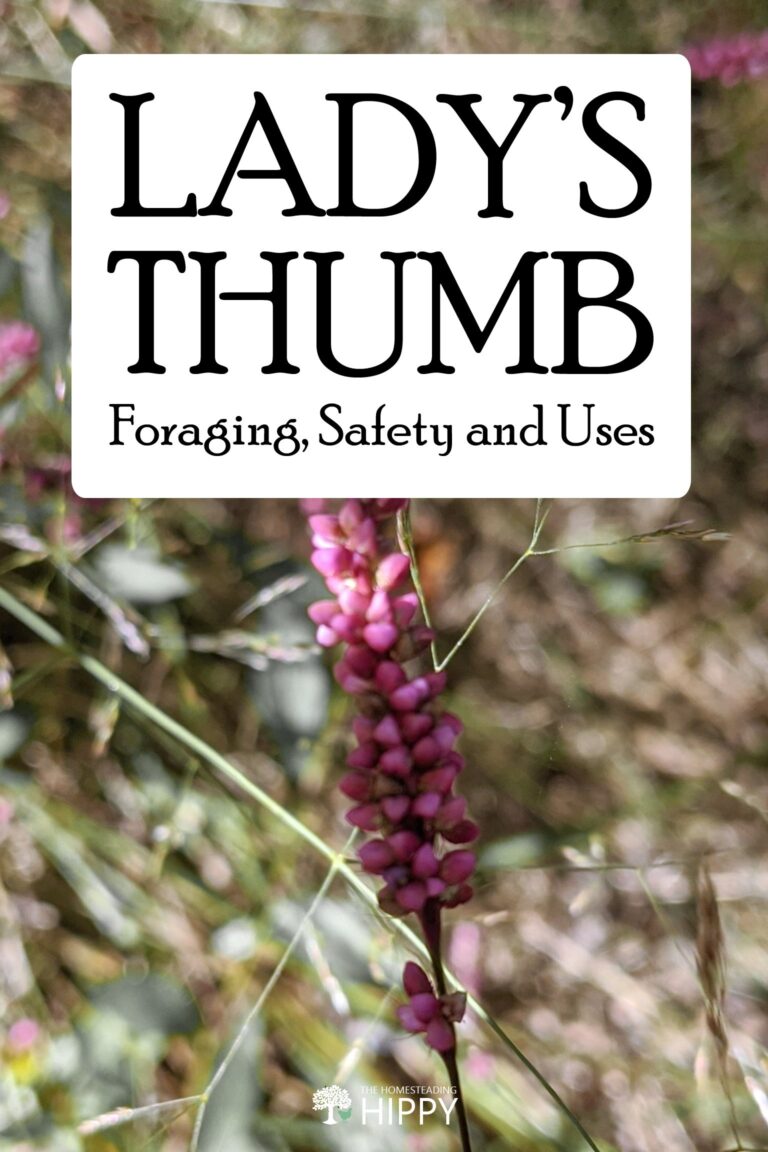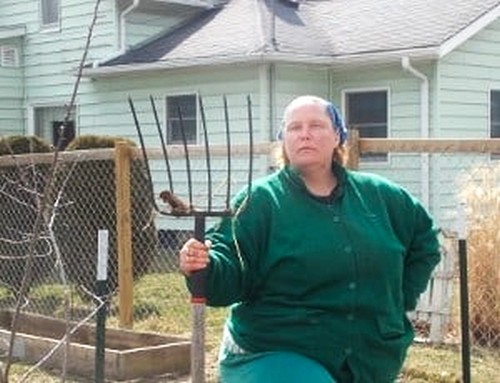Lady’s thumb (Persicaria maculosa) is a summer annual belonging to the buckwheat (polygonaceae) family. This adaptable smartweed grows abundantly throughout North America and Eurasia.

In North America, the plant is considered an invasive species and farmers and gardeners work hard to prevent it and rid it from their fields. However, like many other weeds, it also has many good uses and is also a culinary delight.
Lady’s thumb originated in Eurasia and was introduced to North America during colonization. It now grows abundantly in multiple continents. The plant is not poisonous to touch or even eat and is a versatile ingredient in the kitchen.
Native Americans even used it medicinally. However, due to its resemblance to other, nonedible weeds, it is important that foragers know exactly how to identify it.
Here is what you need to know about those lady’s thumb plants growing ion the edges of your homestead.
Table of Contents
Identifying Lady’s Thumb
Lady’s Thumb is a small plant, growing only between six and twenty-four inches. The lush green leaves on this plant usually have an ovular or triangular black smudge, resembling a thumb print. Hence the plant’s common name.
More noticeable are the lady thumb’s elongated clusters of pink or purple flowers blooming from a fibrous stem.
Flowers
The dark pink or purple flowers may be the most easily noticeable part of the plant, but it should be noted that sometimes they can blossom white. Flower clusters typically grow erect but have been known to sprawl.
The lady’s thumb’s flowers also contain no petals; instead, each flower consists of five sepals and six stamens. They are also short, growing only ⅛ of an inch. Flowers can bloom anytime from late spring to early fall but will most likely do so for 1-2 months in the summer.

Because these flowers are slow to bloom, one might mistake them closed off for seeds. However, the seeds are actually ovoid, black, and shiny. They are enclosed by the sepals and dispersed by the wind.
Leaves
The leaves of the lady thumb plant grow in an alternating pattern. They are green, lance-shaped, and precise. Each leaf is 6 times longer than it is wide.
The leaves are the source of this smartweed’s common name, as the vibrant green leaves often contain the natural black smudge that has become its trademark.
Pennsylvania smartweed has a mark on some leaves, but not all. So, if you see one leaf in a plant with no markings, then you don’t have Lady’s thumb.
Lady’s Thumb vs. Other Weeds
Lady’s thumb is easily recognizable, making it an ideal plant for novice foragers. The most common lookalike for the lady thumb when you are out foraging is Pennsylvania smartweed, which is also edible.
The easiest way to determine if a plant is Lady’s Thumb is to look for the signature black smudge. The smudge can sometimes be subtle and appear more like a darker green blotch on the green leaf, so you may have to look closely. Don’t worry though, Lady’s thumb is not poisonous to the touch.
Where to Find It
Hardiness
The abundance of Persicaria suggests that the weed can grow in a wide range of climates. It is very common in the Great Lakes region of the United States and has spread throughout the rest of the continent since its introduction.
As a weed, you can find it along roads, waste sites, and railroad tracks. It can also be found in gardens, along trails, and in wetlands, upland forests, and in fallow fields.
The plant prefers full sun or partial shade. Although it can handle a wide range of temperatures, lady’s thumb does not do well under intense heat.
This perennial grows in hardiness zones 2-10, making it one hardy weed. It can endure winter temperatures between -5 0F (-45.6 C) and 40 F (4.4 C).
Soil
The plant prefers moist soils but is known to tolerate dryer conditions as well. It grows in sandy soil, which is why you can find it along the Great Lakes or on the shores of Massachusetts and Connecticut.
Various studies have yielded conflicting results about lady’s thumb growing in flood lands or areas well inundated with water.
One greenhouse experiment found that the roots showed high phenotypic plasticity in response to moisture availability. Flooding as well as a lack of moisture led to lower root biomass.
Additionally, the plants exposed to constant moisture grew much longer roots than the plants exposed to either dry or flooded conditions.
Balance is key for the establishment of this plant. Lady’s thumb grows in sandy soils, even though sand reduces the amount of water that the plant can retain.
However, lady’s thumb growing along beaches have constant exposure to water, and the sand acts as a sort of filter so the plant is not overwatered.
History
Lady’s thumb is definitely a world travelling weed. The plant is super hardy, and its adaptability to different climates has allowed it to spread widely across many different countries and even continents.
British settlers most likely brought it to the Americas and Oceania, where it now flourishes.
Eurasian Origins
Lady’s thumb originates from the European and Asian continents. The widespread weed has grown just about everywhere, from Iceland to Portugal, and as far east as Japan.
It has even been found growing in Australia and New Zealand. The hardy plant also grows in the Altai Mountains of Mongolia, alongside several other medicinal herbs.
An Invasive Species in North America
Lady’s thumb’s hardiness is definitely a double-edged sword. As discussed earlier, the plant was originally introduced to the United States from Europe and is now considered an invasive species here due to its abundance.
Unlike other invasive weeds, such as snakeroot, lady’s thumb only propagates through seeds, which are dispersed by wind.
Since these seeds are also popular among hungry birds, one must assume that these flowers produce quite a lot of seeds to keep up with demand while still becoming invasive!
If you’re not careful, lady’s thumb can spread prolifically through the gardens and fields on your homestead, crowding out your herbs and vegetables.
The best way to keep this from happening is to prevent the spread of this plant and other invasive weeds.
Put down plastic sheeting or fabric as ground covers in areas you’re not going to cultivate; this is a great way to prevent lady’s thumb from taking over areas you’re not paying much attention to.
You should also pluck lady’s thumb out from your garden rows when it’s still small, which will help prevent it from taking hold amongst your vegetables.
If lady’s thumb does invade your homestead, you’ll just have to take the time to root it out. A heavy mulching after you’re done with weed removal should help to keep it from coming back in force for the rest of the rowing season.
Lady’s Thumb in the Kitchen
Although Native Americans did not know about the plant for centuries, like native weeds, they still found several uses for it.
The versatility of the plant makes it among the more well-liked invasive species, although there hasn’t been many studies produced about the plant.
In terms of propagation, there is really no need to grow lady’s thumb in your garden, as its more than likely already growing around the edges.
Lady’s thumb, unlike other invasive weeds in North America such as snakeroot, is edible. Almost every part of the plant is popular among adventurous homestead chefs, whether raw or cooked.
The wild herb has a mild, yet peppery and slightly bitter flavor that makes it better as a seasoning than a main dish. This also makes it unpopular to many mammalian herbivores, although it is popular among various insects.
Given its popularity among Native Americans against various ailments, it’s no surprise that Lady’s thumb, in addition to its spicy, peppery flavor, also has numerous health benefits. Various parts of the plant are rich in natural fibers, sugars, fats, tannins, and phenolic acids.
Using the Leaves
The leaves of lady’s thumb have a mild, even bland taste. Like seeds, they can be eaten raw or cooked. Foragers typically use the leaves as a lettuce substitute in salad recipes, due to the similar tastes, and lady’s thumb’s additional health benefits.
If you are substituting spinach with lady’s thumb leaves, then boil the leaves for five to ten minutes before crafting the dish. The leaves as well as the stems can be used sparingly in soups as well.
Lady’s Thumb Stir Fry Recipe
The leaves can also replace spinach in a garlic stir fry. This stir fry is the perfect green side to a fresh cooked steak.
For this recipe, you’ll need peanut oil, minced garlic, chile paste, salt and pepper, sugar, sesame oil, and raw lady’s thumb leaves in lieu of raw baby spinach.
Preheat the pan and add 2 tablespoons of peanut oil and swirl it around. Once it is hot, add 1 teaspoon of minced garlic, ¼ teaspoon of chili paste, and salt. Stir until the garlic is aromatic, which should only take a few seconds.
Add the raw leaves and stir until the leaves are almost wilted, which should only be 1-2 minutes. Stir in a ¼ teaspoon of granulated sugar and a ¼ teaspoon of sesame oil. Mix in some pepper if desired and serve immediately.
Note: The leaves do not have to be boiled before adding them to the recipe because they will be cooked in the pan.
Lady’s Thumb Seeds
The seeds of Lady’s thumb are black under their papery pink coating, which can be rubbed off with your fingers.
The seeds can then be eaten raw, cooked, sauteed, or prepared any other way. These seeds have a zesty, slightly bitter taste that makes them a perfect substitute for pepper. One way to enjoy these seeds is to use them as seasoning on roasted mini peppers.
Roasted Peppers Seasoned with Lady’s Thumb Seeds Recipe
All you need are one tablespoon of lady’s thumb seeds, salt, extra virgin olive oil, balsamic vinegar, and 8oz of mini peppers. I prefer to use a combination of red, green, and orange mini peppers to create a colorful spread with an assortment of flavors.
Chop the peppers lengthwise and place them in a bowl. Add a teaspoon of salt, ¼ a cup of olive oil, 3 tablespoons of balsamic vinegar, and lightly sprinkle in the seeds.
Toss until every ingredient is well blended. Transfer the mix onto a 9×13 inch pan and cook at 450F for 15-25 minutes. Check on the peppers after fifteen minutes. You want dark spots, but not a char. Remove from the oven, let cool, and serve immediately on a platter.
Medicinal Uses
Although lady’s thumb is not native to North America, Native Americans found several medicinal uses for the weed.
This isn’t surprising when one considers all the antioxidants these plants contain. The Cherokee, Chippewa, and Iroquois tribes used lady’s thumb for dermatological, gastrointestinal, and urinary aids, as well as for heart medicine and as a pain reliever.
Native Americans, as well as various Eurasian tribes, also ground lady’s thumb into a poultice to alleviate burns and poison ivy.
While some foragers have reported a mild burning sensation when pressing lady’s thumb to their face, the leaves actually soothe skin that has been burned or exposed to poison ivy.
Native Americans brewed lady’s thumb into a tea to alleviate various ailments. You can make the herbal tea by brewing 10g of dried herbs in 200ml of boiled water for 15 minutes.
You should drink it 2-3 times a day for best results. As an infusion, boil the 10g of dried herbs in the water for 15 minutes, and drink it 3 times a day.
Lady’s Thumb for Other Creatures
Humans aren’t the only species to reap the benefits of this tasty plant. Lady’s thumb provides much needed nutrition to critters of all shapes and sizes. This makes the weed an important member of ecosystems across the globe.
Lady’s thumb provides nourishment for many important pollinators. In the state of Montana alone, it has been recorded as a pollinator for nine different species of bees (Bombus).
Lady’s thumb is in season from mid spring to late fall, which means it provides a reliable food source for bees throughout most of the year, but especially in the months leading up to hibernation, when nutrition becomes scarce.
Mammalian herbivores rarely feed on lady’s thumb due to the bitter, peppery taste. However, there are a few exceptions. White-tailed deer have been known to eat the tops of young plants
Sister Species of Lady’s Thumb
Since lady’s thumb is a member of the buckwheat family, it has many closely related sister species that are also popular among foragers. Like lady’s thumb, these plants are also edible, and can be found growing abundantly throughout the United States and Eurasia.
Oriental Lady’s Thumb
Oriental lady’s thumb (Persicaria longiseta) closely resembles lady’s thumb. Like its relative, this perennial is composed of slender, spike-like pink or purple flowers containing dark seeds. The leaves grow in an alternate pattern around the stem.
Unlike lady’s thumb, the longiseta does not have the signature dark thumbprint that gave lady’s thumb its name. However, some leaves may have a subtle marking.
Additionally, longiseta has bristly, long hairs growing from the base of the flowers. These hairs may sometimes even grow longer than the flowers themselves. Lady’s thumb, however, only has hairs roughly ⅛ of an inch long on its ocrea.
Due to the resemblance of the plants, oriental lady’s thumb is often misidentified as lady’s thumb.
Thus, in Minnesota, oriental is believed to grow much more abundantly than recorded. However, oriental lady’s thumb, as the name suggests, originated in China, Japan, India, and eastern Russia.
The plant was then introduced to Europe and eventually North America. Like it’s cousin, oriental lady’s thumb is a versatile weed growing in a wide variety of environments.
Pale Smartweed
Pale smartweed (Persicaria lapathifolia) is another plant in the Polygonaceae family. This weed can be found growing along the California coast, as it thrives in moist environments such as wetlands and riparian areas.
It is much more abundant in southern California than northern, but it can be found all throughout the state. It can also be found in the Midwest, along the great lakes region.
Lapathifolia is much larger than lady’s thumb. It grows between two and a half to four feet tall. The spiky racemes of flowers grow between 2-8 inches long, and droop downwards.
Like lady’s thumb, the flowers are composed of five tepals. However, because the flowers don’t open fully, it has been difficult for botanists to observe the insides closely.
Pale smartweed has been reported as indigenous to California and as a European introduction. Thus, it is possible that multiple ecotypes occur.
This weed is a late bloomer, as it blooms between August and November.
A Versatile Weed for Foragers at All Levels
Because lady’s thumb is edible and distinguishable, it is considered an excellent target plant for novice foragers. Because of its diversity in the kitchen, it is also a plant that expert foragers return to time and time again.
If you are a first-time forager, it may be helpful to go foraging with a friend who is more experienced.
This person can show you the small tips and tricks to identifying lady’s thumb, and if you get confused, just look at the leaves for that signature black thumbprint.
Once your confident in identifying lady’s thumb, you’ll be ready to put this versatile wild plant to good use in your homesteader’s kitchen right away!


Heather’s homesteading journey started in 2006, with baby steps: first, she got a few raised beds, some chickens, and rabbits. Over the years, she amassed a wealth of homesteading knowledge, knowledge that you can find in the articles of this blog.
Learn more about Heather and the rest of the writers on this page.

Love your blog!!